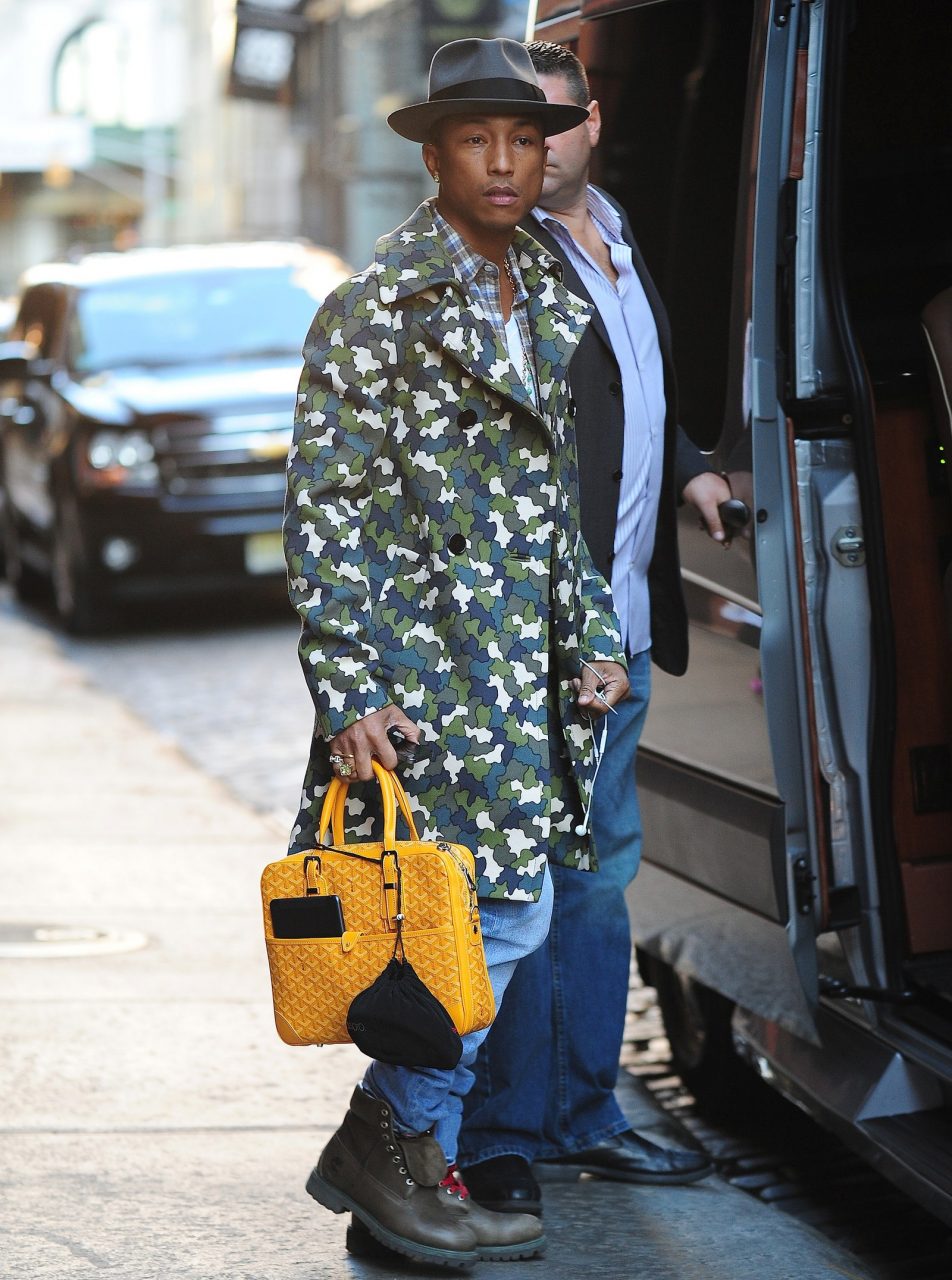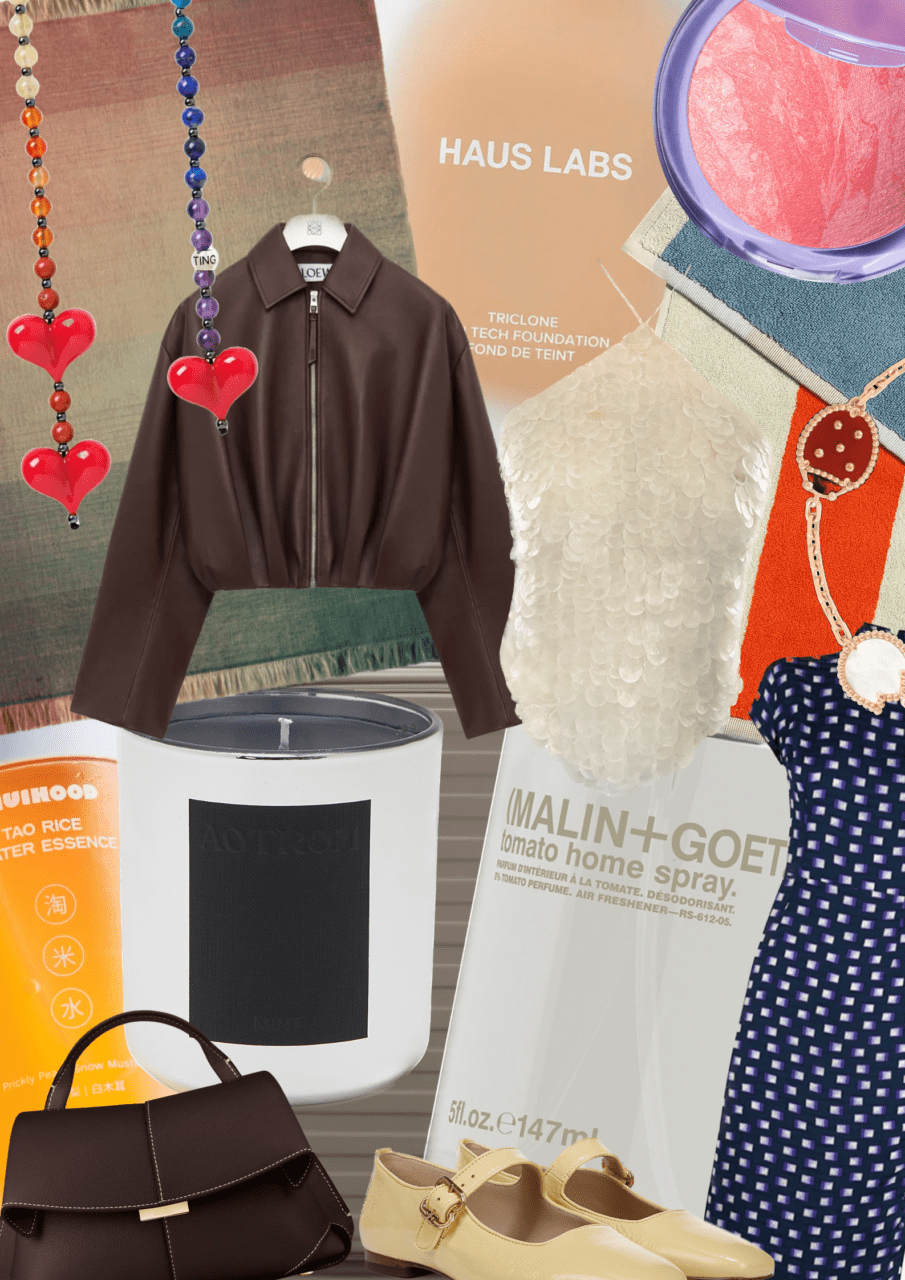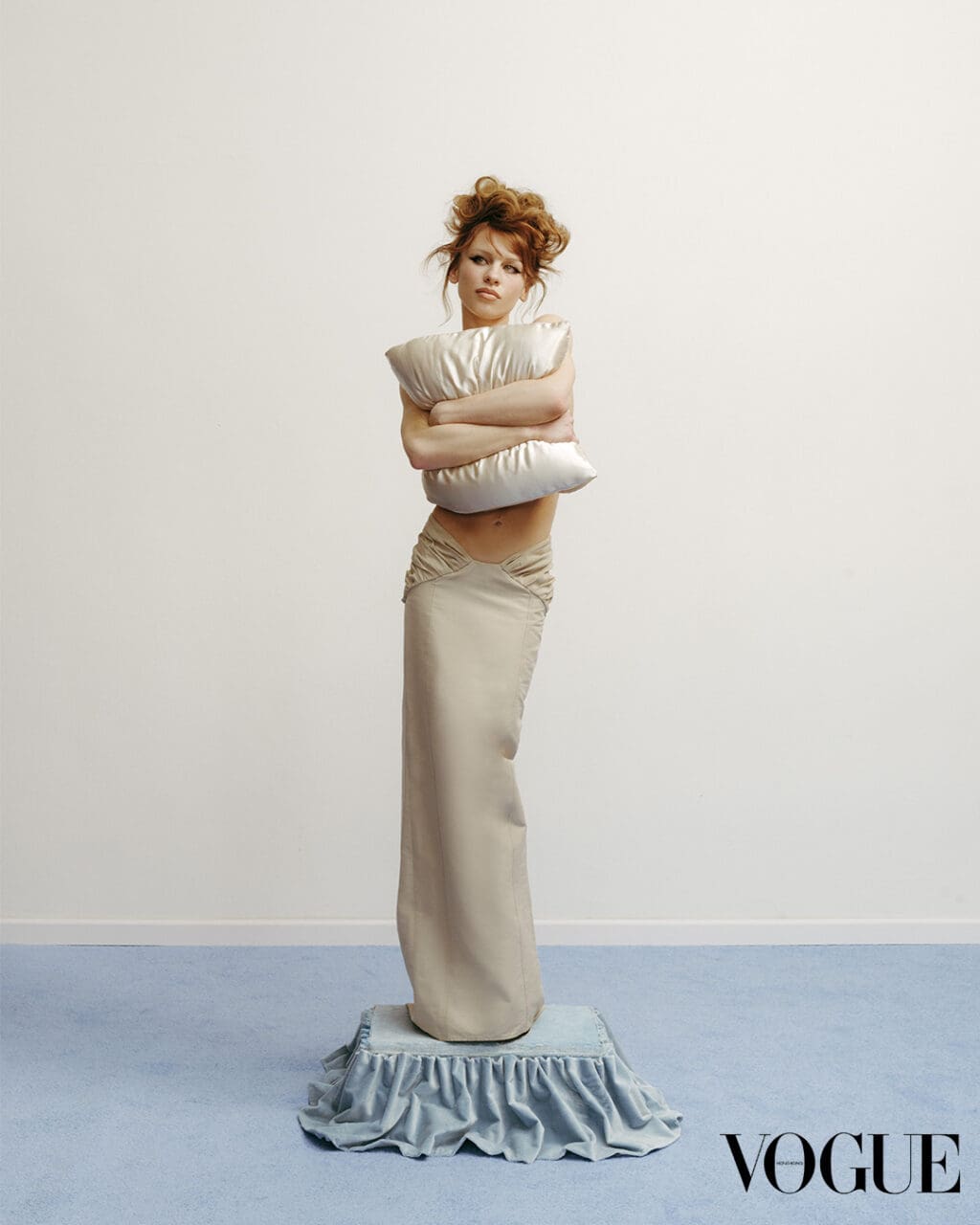A strong social media presence is a must for brands trying to get ahead of the curve in the 21st century, but Goyard prefers to keep a low-profile. The storied Parisian trunk maker – founded in 1853, one year before its famed contemporary, Louis Vuitton – is shrouded in mystery.
Rihanna toting an emerald Goyard Saigon top handle
Photo: MEGA via Getty Images
The malletier’s history can actually be traced all the way back to the 18th century, when Pierre-François Martin founded trunk-makers the House of Martin. Years later, Louis-Henri Morel took over and established the House of Morel, hiring a young François Goyard as an apprentice in 1845. Goyard was mentored by both Martin and Morel, and took the helm when Martin died in 1852.
From that moment, Goyard honed a legacy founded on craftsmanship and artisanal excellence. He opened dedicated workshops and conceived the monogram print – to this day its signature design flair – inspired by the Goyard family tree. (It was dubbed the Goyardine pattern in 1982.)
Recognised for its unique, timeless quality, the Goyardine is steeped in history: the stacked dots represent the logs driven François Goyard’s ancestors, and the canvas material is made from the same naturally-coated cotton and linen cloth used by the Compagnons de Rivières, a guild of transporters who moved wood to Paris.
Rosie Huntington-Whiteley clutching her Goyard Richelieu wallet
Photo: Raymond Hall via GC Images
Jean-Michel Signoles revived Goyard in 1998 – production had been halted by the Second World War. He created state-of-the-art workshops and enlisted the help of his sons Alex, Rémi and Pierre. A section on Goyard’s website reflects Signoles’s commitment to Goyard: “Of course, the contemporary Goyard workshops are more spacious, functional and altogether a lot different from those of yesterday, but the know-how and passion of the artisans remain the same.”
Signoles established new boutiques all over the world, attracting a global customer base. Today, the pieces are made using traditionally-adapted techniques: designs were originally hand-painted, but the current process makes use of a ground-colour application, then layers of etching.
David Beckham with his Goyard Majordome case
Photo: Gotham/GC Images
In this digital age, Goyard has dabbled in the realms of social media – its Instagram feed doesn’t offer much insight into the behind-the-scenes goings on at the brand, however. While most modern brands would hope to attract consumers through advertising, seeding or events, @Goyardofficial shares only occasional still life posts or short video clips, never a model or famous face. It has posted fewer than 250 times.
Despite its elusive online presence, Goyard retains a stellar clientele. International royals, heads of state, Gabrielle “Coco” Chanel, Lauren Bacall, Josephine Baker, Jeanne Moreau and Karl Lagerfeld have all owned Goyard luggage – Lagerfeld even commissioned bespoke items for his beloved cat, Choupette. The brand is said to have a filing cabinet that holds the index cards of all client accounts, listing the bespoke pieces made for them over generations.

Pharrell Williams holding a sunshine-yellow Goyard Diplomat briefcase
Photo: Alo Ceballos via FilmMagic
Goyard’s handbags have acquired cult status – A-listers regard Goyard goods as being as precious as Hermès Birkins. This is partly due to the fact that – like a Birkin – Goyard luggage is notoriously hard to source. The maison doesn’t have an e-commerce site, therefore if a customer wants to buy new, they must visit a boutique. Resale sites like Vestiaire and 1stDibs list various pre-owned Goyard styles, including its trademark Saint Lois everyday tote, named after Louis IX.
Rihanna, Bella Hadid, Rosie Huntington-Whiteley, Dua Lipa, Hailey Bieber, Kerry Washington, Gwyneth Paltrow, the Kardashian-Jenners, Pharrell and the Beckhams are among the brand’s high-profile following. Bella has been spied with the Kios shoulder bag in tow, while Rih owns the Croisière and Saigon styles. Rosie and Dua have fallen for Goyard’s small leather goods, purchasing the Richelieu wallet and Saint Sulpice card holder, respectively.
Editor
Alice CaryCredit
Lead Image: Marc Piasecki via Getty Images








